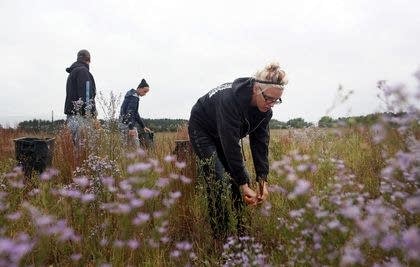Harvesting the past

The combine of choice for harvesting native prairie seed is a 30-year-old Allis Chalmers Gleaner. It's simple and easy to repair.
So, the folks who own and operate the Princeton, Minnesota-based Prairie Restorations Inc. have pretty much cornered the market on them. They own about a dozen including some they keep around for scavenging spare parts because, after all, they don't make 'em anymore.
You can hear the hum of the Allis as it churns through a field of little blue stem this afternoon in my latest Minnesota Sounds & Voices story on All Things Considered.
Create a More Connected Minnesota
MPR News is your trusted resource for the news you need. With your support, MPR News brings accessible, courageous journalism and authentic conversation to everyone - free of paywalls and barriers. Your gift makes a difference.
The fun fact about the combine is part of what I learned on a visit to the company's 400-acre farm one hour north of the Twin Cities. It's close to the peak of harvest season now and the old combine is chugging through fields of native prairie plants.
However, as the photo above taken by MPR's Jeff Thompson shows, there's still lots of hand work involved in harvesting native prairie plant seeds. Trista Backlund and other Prairie Restorations, Inc. employees are harvesting Hoary Vervain on Sept. 12, 2012.
The 35-year-old Prairie Restorations company started by Ron Bowen designs, restores and manages native plant communities.
They do about 300 projects a year, planting and restoring about 1500 acres of prairie.
In the bigger scheme of things that's a significant addition in part because so much of Minnesota's native prairie, about 99 percent, is gone. It's been plowed up for fields, houses, you name it.
A visit to the Minnesota Department of Natural Resources web page shows where the state's prairie remnants are located. The DNR along with The Nature Conservancy are part of a 25-year-long, $3.6 billion state program to protect and expand native plant habitat.